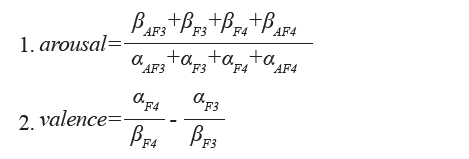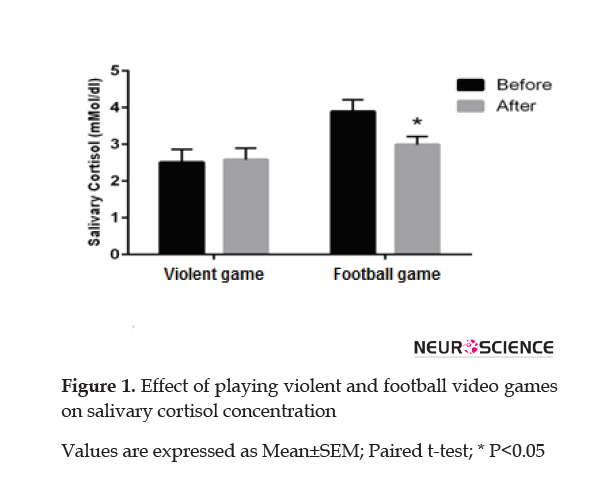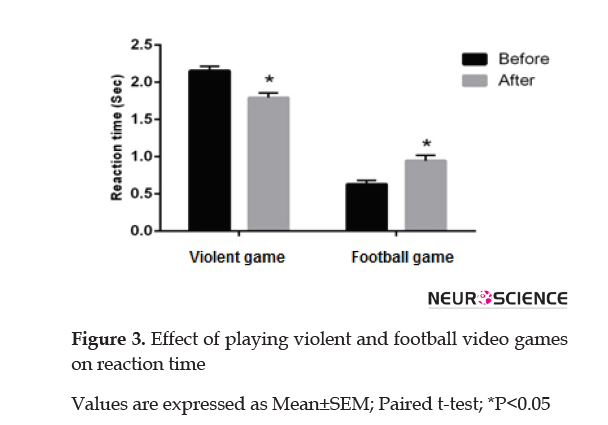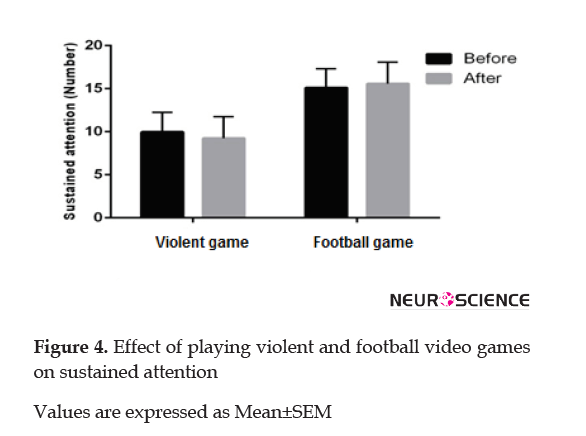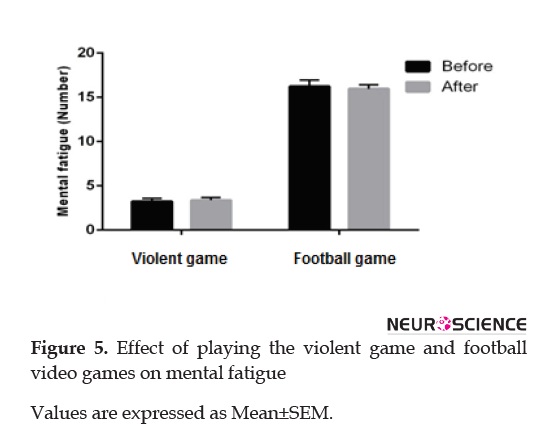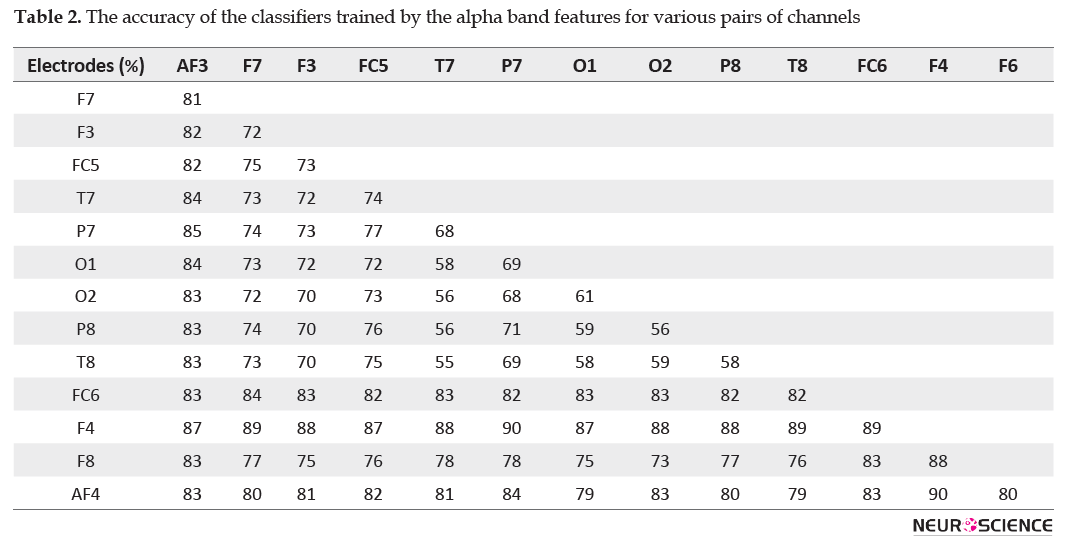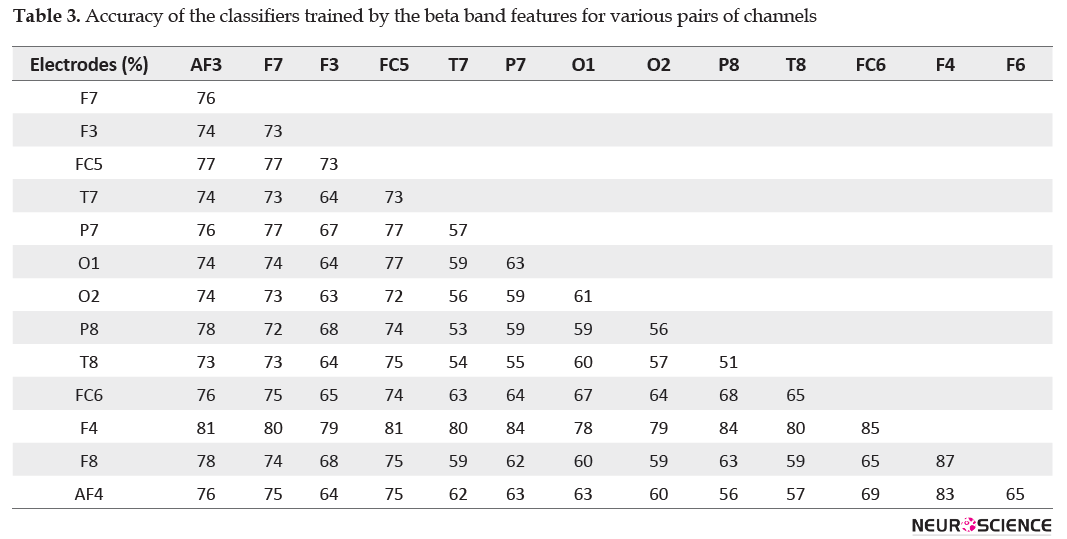BibTeX | RIS | EndNote | Medlars | ProCite | Reference Manager | RefWorks
Send citation to:
URL: http://bcn.iums.ac.ir/article-1-1287-en.html


 , Hedayat Sahraei2
, Hedayat Sahraei2 

 , Marjan Erfani3
, Marjan Erfani3 

 , Mohammad Mohammadi4
, Mohammad Mohammadi4 

 , Masoomeh Kazemi *2
, Masoomeh Kazemi *2 

 , Mohammad Reza Daliri5
, Mohammad Reza Daliri5 

 , Behrouz Minaei-Bidgol6
, Behrouz Minaei-Bidgol6 

 , Hassan Agaei2
, Hassan Agaei2 

 , Mohammad Sahraei7
, Mohammad Sahraei7 

 , Seyed Mohammad Ali Seyed Hosseini8
, Seyed Mohammad Ali Seyed Hosseini8 

 , Elaheh Tekieh2
, Elaheh Tekieh2 

 , Maryam Salehi2
, Maryam Salehi2 

 , Fereshteh Farajdokht9
, Fereshteh Farajdokht9 


2- Neuroscience Research Center, Baqiyatallah University of Medical Sciences, Tehran, Iran.
3- Neurosciences Research Center, Tabriz University of Medical Sciences, Tabriz, Iran.
4- Human Motion Control and Computational Neuroscience Laboratory, School of ECE, College of Engineering, University of Tehran,Tehran, Iran.
5- Department of Electrical Engineering, University of Science and Technology, Tehran, Iran.
6- School of Computer Engineering, University of Science and Technology, Tehran, Iran.
7- Faculty of Dentistry, Shahid Beheshti University of Medical Sciences, Tehran, Iran.
8- Department of Social Sciences, Islamic Azad University North Tehran Branch, Tehran, Iran.
9- Department of Physiology, Tabriz University of Medical Sciences, Tabriz, Iran.
● Violent games reduced reaction time and increased sustained attention and mental fatigue.
Plain Language Summary
Video game advertising has been increasing, and currently, there is a high tendency toward video games. Besides, it has shown that video games can improve life skills and also affect cognition. The purpose of this study was to compare the effects of playing video games (football and violent games) on the stress hormone and cognitive performance of the players. Moreover, the effect of these two games on brain activity was assessed using an electroencephalogram. The results showed that these video games have different effects on the cognitive function of the players.
1. Introduction
Nowadays, video games are not only used for entertainment and relaxing but also form one of the biggest industries in the world of information and communication technology (Newman, 2015). Video game advertising has been increasing, and currently, there is a high tendency toward video games among almost all children and adolescents (Lenhart, Kahne, Middaugh, Macgill, Evans, & Vitak, 2008).
A grow body of evidence showed that video games can improve life skills, such as problem-solving, learning and memory, attention, decision-making, and self-confidence (Green & Bavelier, 2003; Aliyari et al., 2015). However, adverse effects of video games can lead to an inability to acquire personal and social life skills, which may result in psychological disorders, such as stress and depression (Anderson et al., 2010). Also, the type of video games can differently influence the audience. Recent studies have indicated that complicated, serious, strategic, and action video games improve communications between different brain regions, especially the hippocampus, prefrontal cortex, cerebellum, and optic tracts (Spook, Paulussen, Kok, & van Empelen, 2016; Anderson, 2004; Bisoglio, Michaels, Mervis, & Ashinoff, 2014; Buelow, Okdie, & Cooper, 2015). It has also been shown that playing violent video games increases hostility and aggressive behaviors in the players (Hollingdale and Greitemeyer, 2013; Anderson and Carnagey, 2009). Moreover, it has been shown that several video games through continuous stimulation of the stress system and Hypothalamus-Pituitary-Adrenal (HPA) axis influence the brain functions, such as memory and decision-making (Lupien et al., 2005; Lupien and Lepage, 2001). Several studies have also reported that playing video games can cause arousal and physiological reactions, such as increased heartbeat, blood pressure, and blood flow to muscles, as well as increased breathing responses (Hébert, Béland, Dionne-Fournelle, Crête, & Lupien, 2005; Segal & Dietz, 1991; Wang & Perry, 2006).
Recording brain wave patterns using an Electroencephalogram (EEG) recording machine is increasingly used by researchers in different fields as a conventional approach to assess the brain signals variations (Wehbe & Nacke, 2013; Aliyari et al., 2018). The EEG signal provides online and real-time information about brain status and activity (Mullen et al., 2015). In addition, this method is currently used for cognitive state monitoring and medical diagnostic or therapeutic procedures (Fairclough, 2009; Debener, Minow, Emkes,Gandras, & Vos, 2012).
In the present study, we investigated the effects of different models of video games, such as violent and football games on cognitive performance, hormonal change, and the brain activity during continuous playing the games using EEG in the players.
2. Methods
2.1. Participants
A total of 64 volunteer male participants (32 subjects per game) were registered and screened through an invitation for undergraduate students aged 20-25 years. All participants had not played the game formerly. A research questionnaire, which covered personal information, favorite games, game types, and the average time spent playing during a day were completed by the participants. In the beginning, the players completed a form assessing their personal information and were given the instructions to play each game before starting the game. All ethical considerations were met to study on human subjects, and before data collection, the informed consent was obtained from each participant. This research was carried out following obtaining the Ethics Code (IR.BMSU.REC.1394.112).
2.2. Cortisol assay
Saliva samples of all players were obtained before and after the games to measure the levels of cortisol. Salivary cortisol was measured using human cortisol Enzyme-Linked Immunosorbent Assay (ELISA) kits (Diagnostics Biochem Canada Inc, (DBC)).
2.3. Paced Auditory Serial Addition Test (PASAT)
The PASAT is a measure of cognitive function, which was conducted before and after playing the games, to assess the cognitive performance of the participants and the obtained results were analyzed through the PASAT software. In this test, 61 random numbers between 1 and 9 were presented to the subjects with 3-second intervals. The respondent had to sum every two consecutive final numbers and answer the question before a new number was announced. For instance, if numbers 2 and 6 were announced in the mentioned order, the respondent’s correct answer should be 8. The answers to the questions were compared before and after playing the game. The mean time to respond (reaction time), the longest chain of correct answers (sustained attention), and the longest chain of wrong answers (mental fatigue) were also evaluated in this research.
2.4. EEG recording
2.4.1. Data collection
In this study, EEG data were collected from 64 male participants. The participants were healthy with the average age of 20-25 years and had no history of mental disease. For data collection, we used the Emotiv EPOC headset, a recently developed wireless EEG acquisition device. The device had 14 electrodes located and labeled according to the international 10-20 system. The device consisted of two reference electrodes for noise reduction. The available electrode positions for the device were as follows: AF3, F7, F3, FC5, T7, P7, O1, O2, P8, T8, FC5, F4, F8, and AF4. The EEG data were transmitted wirelessly to the Bluetooth device and saved on the hard disk for further processes.
2.4.2. Data classification
To determine the type of games played by the participants from the EEG data, we assessed two well-studied features: arousal and valence. These features have been used in the context of emotion detection and proven to be useful in emotion recognition (Choppin, 2000). Arousal refers to the state of excitability of a person and indicates whether the subject is alert or relaxed. On the other hand, affective valence indicates the positive or negative state of the mind. According to Ramirez and Vamvakousis (2012) study, we used the following Equations 1 and 2 to extract the arousal and valence features from the EEG data:
Where, and indicate the power of the signal in alpha (8-12 Hz) and beta (12-30 Hz) bands, associated with the electrodes denoted by subscripts.
To obtain the power of signals in the specific bands of interests, initially, we pre-processed the EEG signals. The main source of artifacts was mostly due to the eye blinks/movements, heartbeats, muscle activities, and power-line noise. By referencing the EEG signals and exploiting a band-pass filter, the power of the signals in alpha and beta bands were extracted and the artifacts components were mainly removed. The level of arousal and valence in participants was determined using the power of EEG signals for specified electrodes in the alpha and beta bands.
The EEG signal was acquired by a sampling rate of 128Hz. To analyze the EEG data, we applied a temporal window on the EEG signals and shifted it every 0.0625 s. Therefore, each data point corresponds to the power of the signal in alpha and beta bands at the time interval from t1 to t1+ s for all channels, and the next data points were generated with specific increments of t. The increments of t should be small enough to capture the fast dynamics of brain activity. Accordingly, we used the increments of 0.0625 s.
In the present study, the Support Vector Machine (SVM) classifier was used to discriminate the specific video games (tasks) played by the participants. We utilized the statistics toolbox in MATLAB, and specifically SVM learning algorithms to implement the SVM classifier.
2.5. Data analysis
Data were expressed as the mean±standard error of the means±SEM and analyzed by SPSS software. The paired sample t-test was used to determine the differences before and after playing the games. Also, p<0.05 was considered statistically significant.
3. Results
3.1. Salivary cortisol
The results showed that playing the football video game significantly (p<0.05) decreased cortisol concentration than before the game. However, after playing the violent game no significant difference in salivary cortisol was observed than before the game (Figure 1).
3.2. Mental health
The number of correct answers to questions, as an index of mental health, provided by the participants playing violent and football games revealed no significant difference in players before and after playing the games (Figure 2).
3.3. Reaction time
Our results also showed that the mean time spent to answer the reaction time of the players after playing the football game increased (p<0.05) indicating the increased reaction time. However, a considerable decrease was observed in the reaction time of the participants playing a violent game demonstrating a high speed of response (Figure 3).
3.4. Sustained attention
We also found that playing the football game slightly increased sustained attention (the longest chain of correct answers) of the participants as compared to the pre-playing status. However, the sustained attention of the violent game players slightly decreased after playing (Figure 4).
3.5. Mental fatigue
The result of the Paired t-test revealed that mental fatigue (the longest chain of wrong answers) slightly decreased in the players of the football video game, whereas this indicator slightly increased in the participants who played the violent game (Figure 5).
3.6. Brain mapping
Given arousal and valence as the main features, the average accuracy of the classifier was 78.76%. Because the training data consists of nearly equal data points of each class, the expected accuracy of a naïve classifier was 50%. The training data, support vectors, as well as the boundary of margin, are depicted in Figure 6.
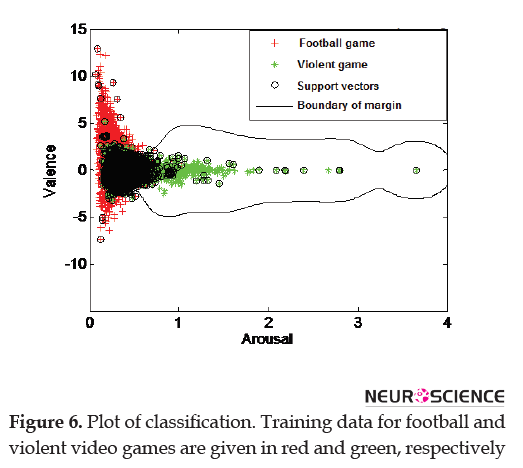
Selecting other sets of features may result in better classifiers. Arousal and valence represent the features that exploit the ratio of the power of distinct bands, e.g. We used other feature candidates that may result in better classification accuracies. In Table 1, the accuracies of classifiers for different feature sets are summarized. Each vector comprises the power of alpha and beta bands of the same electrode, e.g. The results of this analysis demonstrated that feature vectors offer classifiers with an accuracy of 88%, 87%, 84%, and 83%, respectively.
Furthermore, we used only the alpha and beta band powers to assess the ability to do the tasks according to the level of relaxation and alertness, respectively. This feature was selected as the alpha activity is associated with a relaxed state of mind and is more prominent in the occipital and parietal lobes. On the other hand, beta activity is associated with alertness and active mental state and is predominantly observed in the frontal cortex. Accordingly, we trained SVM classifiers with two sets of features and in which and are subscripts denoting distinctive electrodes.
The accuracy of the classifiers is presented in Tables 2 and 3 for alpha and beta activities, respectively.
The alpha power in AF3, FC6, F4, and AF4 channels showed better features, in which more accurate classifiers were trained. Besides,and yielded the best classifiers trained by the alpha band features with an accuracy of 90%. Moreover, the power of the beta band in AF3, F7, FC5, and F4 channels (red columns and rows in Table 3) also showed better features, in which more accurate classifiers were trained. Moreover, and yielded the best classifiers trained by beta band features with the accuracies of 87% and 85%, respectively.
4. Discussion
The results of the present study revealed a significant decrease in the stress hormone levels, cortisol, after playing football and violent games. Moreover, playing the football game increased response speed and decreased sustained attention, as well as the number of wrong answers, as a marker of mental fatigue. However, the violent game reduced reaction time and increased sustained attention and mental fatigue. Furthermore, EEG recording demonstrated that the violent game engaged more brain regions than the football game.
According to the previous studies, different types of video games significantly have improved cognitive functions of the players in the long run (Gray, 2015; Spence & Feng, 2010). It has been proven that video games offer different forms of active learning. In other words, logical problem statements or problem-solving methods train and activate the central nervous system and improve cognitive functions more effectively than passive learning methods (Bisoglio et al., 2014). Moreover, learning takes different concurrent forms, which exponentially reinforce cognitive functions (Basile and Hampton, 2013). Most video games offer a dynamic level of difficulty, which not only increases the player’s skills but also constantly challenges the player. Video games use a combination of internal boosters (e.g. positive social interactions and feelings) and external forces (e.g. scores and medals).
These motivational forces are precisely embedded in games and accessed at different times on certain gradients to attract and encourage the audience to continue the game (Baddeley & Longman, 1978). Video games also constantly keep the brain’s reward system active, resulting in increased brain flexibility (Bao, Chan, & Merzenich, 2001; Kilgard & Merzenich, 1998). Numerous studies have examined the positive effects of action video games on the brain functions, and almost all of these studies suggested that these games improve different brain functions, such as contrast sensitivity and power of vision (Green & Bavelier, 2007), peripheral vision (Buckley, Codina, Bhardwaj, & Pascalis, 2010), time processing (Donohue, Woldorff, & Mitroff, 2010), etc. In the present study, violent and football games showed different effects on the cognitive function of the participants.
Stress can disturb several cognitive factors, such as memory, learning, attention, and concentration (Pechtel & Pizzagalli, 2011; Sandi & Pinelo-Nava, 2007). Cortisol is the most important hormone secreted by the human adrenal gland in response to stress. When the brain detects stress in the environment, the amygdala and hypothalamus are activated resulting in the release of corticotropin-releasing hormone and adrenocorticotropic hormone (Keegan et al., 2007).
Due to the fat-soluble nature of cortisol, it easily flows in the saliva. Therefore, salivary cortisol and its variations can be used as a measure of changes in plasma cortisol and the activity of the HPA axis and the adrenal gland (Smeets, Otgaar, Candel, & Wolf, 2008; Kazemi et al., 2017). Also, the sympathetic-adrenal-medullary axis, as a second potent immunoregulatory and anti-inflammatory stress-response system, stimulates the sympathetic system and increases the secretion of noradrenalin (Chrousos, 2009; Feinstein, Adolphs, Damasio, & Tran, 2011). Previous studies have reported a reduction in salivary cortisol after playing the games, which reflects the tranquility of the players during the games. In this study, the salivary cortisol level decreased in players after playing violent and football games (Figure 1). It seems that due to the characteristics of the video games, players were highly concentrated on the accuracy of the game and their attention was increased while playing. Hence, playing-induced emotions were suppressed in the gamers and the activity of stress systems were subsided (Feinstein et al., 2011).
PASAT is commonly used as a research software for examining the natural cognitive activity of the brain (Aliyari et al., 2015). It was used for the first time by the American army to assess the cognitive readiness of soldiers who survived blasts (Tombaugh, 2006). This test has shown to be effective to assess cognitive factors, such as sustained attention, working memory, dual processing, information processing speed, speed of digit retrieval, speed of mathematical facts retrieval, and time components (Aliyari et al., 2015; Tombaugh, 2006).
In this research, the results of PASAT also revealed the positive effects of football and violent games on the cognitive function of the participants, and the mental health of the players was improved by playing both games (Figure 2). Baniqued et al. (2014) found the effectiveness of casual video games and demonstrated that casual games can improve cognitive functions (Baniqued et al., 2014). Nouchi et al. studied the effects of two extremely popular games, the Brain Age game (Nintendo Co. Ltd) and puzzle game called Tetris (Nintendo), on 8 major cognitive functions of the brain, including short-term memory, working memory, executive functions, fluid intelligence, attention, processing speed, visual ability, and reading ability. Their findings revealed that brain training game (brain age) improved executive functions, working memory, and processing time in young participants, whereas the puzzle game improved attention and spatial visual abilities of the players (Nouchi et al., 2013).
In our study, PASAT results revealed that football and violent games had different effects on the reaction time of the participants. Although football increased reaction time, sustained attention, and mental fatigue of the players, playing the violent game reduced these factors. It seems that facing stress deteriorates the capability of the brain to collect exact and acceptable answers and disrupts memory resulting in an increase in the number of wrong answers (Lupien et al., 2005; Maheu, Joober, & Lupien, 2005).
The frontal lobe is largely involved in the processing of attention and executive functions, and playing video games can facilitate its function (Stuss & Alexander, 2000; Smith & Jonides, 1999). Several studies have used EGG recording to explore brain activity while playing different computer games (He, Yuan, Yang, Sheikholeslami, & He, 2008; Bakaoukas, Coada, & Liarokapis, 2016). In the current study, SVM classifiers were used to classify EEG signals based on various spectral features. All proposed features contributed to a significant accuracy in the classification of the EEG signals. Among these features, alpha band features (and) yielded more accurate classifiers and suggested a variety of features with significantly accurate classifiers. Moreover, and beta band features presented classifiers with proper performance, even though the results were not as good as previous features. Interestingly, the best performance of the classifiers occurred in frontal channels (AF3, AF4, FC6, and F4 for alpha band features and AF3, F7, FC5, and F4 for beta band features).
It seems that these two games provoked distinct cognitive demands, which in turn reflected differently in the EEG recordings suggesting that cognitive signatures of games may be detectable in EEG signals. Another exciting fact about these features was the fact that the alertness or relaxation state of the mind is a reliable candidate to train accurate classifiers (Aliyari et al., 2015; Aliyari et al., 2018). In this regard, the paired alpha band features led to more accurate and robust results, suggesting that the relaxation pattern predicts the type of tasks more accurately. Further research is needed to validate the latter prediction behaviorally. Furthermore, the F4 channel is an electrode that presents reliable features both in alpha and beta bands proposing the potential of this channel in assessing cognitive tasks using EEG signals more precisely. The pairs also offer dependable features in the frontal channels, especially in AF3, FC6, F4, and AF4 channels.
The F4 feature presents a significant potential in the precise classification of EEG signals. Additionally, arousal and valence features showed acceptable classification accuracy. Although it was less than previous features; however, they are important as they are more indifferent to the other subjects. Due to the differences in electrode installation and skin impedance, EEG signals may differ in amplitude, frequency, and different levels of a signal to noise ratio. This may make former features useless because due to personal differences, and the signals may be already distinct enough, therefore, differences in EEG patterns would not cause a concern (Aliyari et al., 2015; Aliyari et al., 2018). On the other hand, the ratio features, like arousal and valence could resolve this problem, as they are normalized, and consequently more indifferent to subjects. It is important to take this problem into consideration when working with specific scenarios depending on our specific application.
Our data indicated that football and violent games decreased salivary cortisol levels. However, these two games had different effects on the cognitive performance of the players. The reaction time, sustained attention, and mental fatigue increased by playing the football game, whereas these factors decreased after playing the violent game. Moreover, we found that spontaneous brain activity changed in response to video games. These positive and negative effects show the necessity of further research, further investment, and proper policies, which may result in more comprehensive results.
Ethical Considerations
Compliance with ethical guidelines
All ethical principles were considered in this article. The participants were informed about the purpose of the research and its implementation stages; they were also assured about the confidentiality of their information; Moreover, They were allowed to leave the study whenever they wish, and if desired, the results of the research would be available to them.
Funding
This research was supported by the Neuroscience Research Center of Baqiyatallah University of Medical Sciences.
Authors' contributions
All authors contributed equally in preparing all parts of the research.
Conflict of interest
The authors declared no potential conflict of interest.
Acknowledgments
We express our gratitude to the Neuroscience Research Center of Baqiyatallah University of Medical Sciences for financial support, and also the Soft Technology Development Council and Neurogame Research Group.
References
Aliyari, H., Hosseinian, S. H., Menhaj, M. B., & Sahraei, H. (2019). Analysis of the effects of high-voltage transmission line on human stress and attention through Electroencephalography (EEG). Iranian Journal of Science and Technology, Transactions of Electrical Engineering, 43, 211-8. [DOI:10.1007/s40998-018-0151-8]
Aliyari, H., Kazemi, M., Tekieh, E., Salehi, M., Sahraei, H., & Daliri, M. R., et al. (2015). The effects of Fifa 2015 computer games on changes in cognitive, hormonal and brain waves functions of young men volunteers. Basic and Clinical Neuroscience, 6(3), 193-201. [PMID] [PMCID]
Aliyari, H., Sahraei, H., Daliri, M. R., Minaei-Bidgoli, B., Kazemi, M., & Agaei, H., et al. (2018). The beneficial or harmful effects of computer game stress on cognitive functions of players. Basic and Clinical Neuroscience, 9(3), 177-86. [DOI:10.29252/nirp.bcn.9.3.177]
Anderson, C. A. (2004). An update on the effects of playing violent video games. Journal of Adolescence, 27(1), 113-22. [DOI:10.1016/j.adolescence.2003.10.009] [PMID]
Anderson, C. A., & Carnagey, N. L. (2009). Causal effects of violent sports video games on aggression: Is it competitiveness or violent content? Journal of Experimental Social Psychology, 45(4), 731-9. [DOI:10.1016/j.jesp.2009.04.019]
Anderson, C. A., Shibuya, A., Ihori, N., Swing, E. L., Bushman, B. J., & Sakamoto, A., et al. (2010). Violent video game effects on aggression, empathy, and prosocial behavior in eastern and western countries: A meta-analytic review. Psychological Bulletin, 136(2), 151-73. [DOI:10.1037/a0018251] [PMID]
Baddeley, A., & Longman, D. (1978). The influence of length and frequency of training session on the rate of learning to type. Ergonomics, 21(8), 627-35. [DOI:10.1080/00140137808931764]
Bakaoukas, A. G., Coada, F., & Liarokapis, F. (2016). Examining brain activity while playing computer games. Journal on Multimodal User Interfaces, 10, 13-29. [DOI:10.1007/s12193-015-0205-4]
Baniqued, P. L., Kranz, M. B., Voss, M. W., Lee, H., Cosman, J. D., & Severson, J., et al. (2014). Cognitive training with casual video games: Points to consider. Frontiers in Psychology, 4, 1010. [DOI:10.3389/fpsyg.2013.01010] [PMID] [PMCID]
Bao, S., Chan, V. T., & Merzenich, M. M. (2001). Cortical remodelling induced by activity of ventral tegmental dopamine neurons. Nature, 412(6842), 79-83. [DOI:10.1038/35083586] [PMID]
Basile, B. M., & Hampton, R. R. (2013). Dissociation of active working memory and passive recognition in rhesus monkeys. Cognition, 126(3), 391-6. [DOI:10.1016/j.cognition.2012.10.012] [PMID] [PMCID]
Bisoglio, J., Michaels, T. I., Mervis, J. E., & Ashinoff, B. K. (2014). Cognitive enhancement through action video game training: Great expectations require greater evidence. Frontiers in Psychology, 5, 136. [DOI:10.3389/fpsyg.2014.00136] [PMID] [PMCID]
Buckley, D., Codina, C., Bhardwaj, P., & Pascalis, O. (2010). Action video game players and deaf observers have larger Goldmann visual fields. Vision Research, 50(5), 548-56. [DOI:10.1016/j.visres.2009.11.018] [PMID]
Buelow, M. T., Okdie, B. M., & Cooper, A. B. (2015). The influence of video games on executive functions in college students. Computers in Human Behavior, 45, 228-34. [DOI:10.1016/j.chb.2014.12.029]
Choppin, A. (2000). [EEG-based human interface for disabled individuals: Emotion expression with neural networks (English)] [MSc. thesis]. Yokohama: Tokyo Institute of Technology.
Chrousos, G. P. (2009). Stress and disorders of the stress system. Nature Reviews Endocrinology, 5(7), 374-81. [DOI:10.1038/nrendo.2009.106] [PMID]
Debener, S., Minow, F., Emkes, R., Gandras, K., & Vos, M. (2012). How about taking a low‐cost, small, and wireless EEG for a walk? Psychophysiology, 49(11), 1617-21. [DOI:10.1111/j.1469-8986.2012.01471.x] [PMID]
Donohue, S. E., Woldorff, M. G., & Mitroff, S. R. (2010). Video game players show more precise multisensory temporal processing abilities. Attention, Perception, & Psychophysics, 72(4), 1120-9. [DOI:10.3758/APP.72.4.1120] [PMID] [PMCID]
Fairclough, S. H. (2009). Fundamentals of physiological computing. Interacting with Computers, 21(1-2), 133-45. [DOI:10.1016/j.intcom.2008.10.011]
Feinstein, J. S., Adolphs, R., Damasio, A., & Tranel, D. (2011). The human amygdala and the induction and experience of fear. Current Biology, 21(1), 34-8. [DOI:10.1016/j.cub.2010.11.042] [PMID] [PMCID]
Gray, P. (2015). Cognitive benefits of playing video games. Retrieved from: https://www.psychologytoday.com/us/blog/freedom-learn/201502/cognitive-benefits-playing-video-games
Green, C. S., & Bavelier, D. (2003). Action video game modifies visual selective attention. Nature, 423(6939), 534-7. [DOI:10.1038/nature01647] [PMID]
Green, C. S., & Bavelier, D. (2007). Action-video-game experience alters the spatial resolution of vision. Psychological Science, 18(1), 88-94. [DOI:10.1111/j.1467-9280.2007.01853.x] [PMID] [PMCID]
He, E. J., Yuan, H., Yang, L., Sheikholeslami, C., & He, B. (2008). EEG spatio-spectral mapping during video game play. Paper presented at International Conference on Information Technology and Applications in Biomedicine, Shenzhen, China, 30-31 May 2008. [DOI:10.1109/ITAB.2008.4570658]
Hébert, S., Béland, R., Dionne-Fournelle, O., Crête, M., & Lupien, S. J. (2005). Physiological stress response to video-game playing: The contribution of built-in music. Life Sciences, 76(20), 2371-80. [DOI:10.1016/j.lfs.2004.11.011] [PMID]
Hollingdale, J., & Greitemeyer, T. (2013). The changing face of aggression: The effect of personalized avatars in a violent video game on levels of aggressive behavior. Journal of Applied Social Psychology, 43(9), 1862-8. [DOI:10.1111/jasp.12148]
Kazemi, M., Sahraei, H., Aliyari, H., Tekieh, E., Saberi, M., & Tavacoli, H., et al. (2017). Effects of the extremely low frequency electromagnetic fields on NMDA-receptor gene expression and visual working memory in male rhesus macaques. Basic and Clinical Neuroscience, 9(3), 167-76. [DOI:10.29252/nirp.bcn.9.3.167] [PMID] [PMCID]
Keegan, C. E., Hutz, J. E., Krause, A. S., Koehler, K., Metherell, L. A., & Boikos, S., et al. (2007). Novel polymorphisms and lack of mutations in the ACD gene in patients with ACTH resistance syndromes. Clinical Endocrinology, 67(2), 168-74. [DOI:10.1111/j.1365-2265.2007.02855.x] [PMID]
Kilgard, M. P., & Merzenich, M. M. (1998). Cortical map reorganization enabled by nucleus basalis activity. Science, 279(5357), 1714-8. [DOI:10.1126/science.279.5357.1714] [PMID]
Lenhart, A., Kahne, J., Middaugh, E., Macgill, A. R., Evans, C., & Vitak, J. (2008). Teens, video games, and civics: Teens’ gaming experiences are diverse and include significant social interaction and civic engagement. Retrieved from: https://www.pewresearch.org/internet/2008/09/16/teens-video-games-and-civics/
Lupien, S. J., & Lepage, M. (2001). Stress, memory, and the hippocampus: Can’t live with it, can’t live without it. Behavioural Brain Research, 127(1-2), 137-58. [DOI:10.1016/S0166-4328(01)00361-8]
Lupien, S. J., Fiocco, A., Wan, N., Maheu, F., Lord, C., & Schramek, T., et al. (2005). Stress hormones and human memory function across the lifespan. Psychoneuroendocrinology, 30(3), 225-42. [DOI:10.1016/j.psyneuen.2004.08.003] [PMID]
Maheu, F. S., Joober, R., & Lupien, S. J. (2005). Declarative memory after stress in humans: Differential involvement of the β-adrenergic and corticosteroid systems. The Journal of Clinical Endocrinology & Metabolism, 90(3), 1697-704. [DOI:10.1210/jc.2004-0009] [PMID]
Mullen, T. R., Kothe, C. A., Chi, Y. M., Ojeda, A., Kerth, T., & Makeig, S., et al. (2015). Real-time neuroimaging and cognitive monitoring using wearable dry EEG. IEEE Transactions on Biomedical Engineering, 62(11), 2553-67. [DOI:10.1109/TBME.2015.2481482] [PMID] [PMCID]
Newman, H. (2015). Games poised to outstrip broadcast TV revenues, SuperData finds. Retrieved from: https://venturebeat.com/2015/05/20/games-poised-to-outstrip-broadcast-tv-revenues-superdata-finds/
Nouchi, R., Taki, Y., Takeuchi, H., Hashizume, H., Nozawa, T., & Kambara, T., et al. (2013). Brain training game boosts executive functions, working memory and processing speed in the young adults: A randomized controlled trial. PLoS One, 8(2), e55518. [DOI:10.1371/journal.pone.0055518] [PMID] [PMCID]
Pechtel, P., & Pizzagalli, D. A. (2011). Effects of early life stress on cognitive and affective function: An integrated review of human literature. Psychopharmacology, 214(1), 55-70. [DOI:10.1007/s00213-010-2009-2] [PMID] [PMCID]
Ramirez, R., & Vamvakousis, Z. (2012). Detecting emotion from EEG signals using the emotive epoc device. In F. M. Zanzotto, S. Tsumoto, N. Taatgen, & Y. Yao (Eds.), Brain Informatics. BI 2012. Lecture notes in computer science. Vol. 7670. Berlin/Heidelberg: Springer. [DOI:10.1007/978-3-642-35139-6_17]
Sandi, C., & Teresa Pinelo-Nava, M. (2007). Stress and memory: Behavioral effects and neurobiological mechanisms. Neural Plasticity, 2007, 78970. [DOI:10.1155/2007/78970] [PMID] [PMCID]
Segal, K. R., & Dietz, W. H. (1991). Physiologic responses to playing a video game. American Journal of Diseases of Children, 145(9), 1034-6. [DOI:10.1001/archpedi.1991.02160090086030] [PMID]
Smeets, T., Otgaar, H., Candel, I., & Wolf, O. T. (2008). True or false? Memory is differentially affected by stress-induced cortisol elevations and sympathetic activity at consolidation and retrieval. Psychoneuroendocrinology, 33(10), 1378-86. [DOI:10.1016/j.psyneuen.2008.07.009] [PMID]
Smith, E. E., & Jonides, J. (1999). Storage and executive processes in the frontal lobes. Science, 283(5408), 1657-61. [DOI:10.1126/science.283.5408.1657] [PMID]
Spence, I., & Feng, J. (2010). Video games and spatial cognition. Review of General Psychology, 14(2), 92-104. [DOI:10.1037/a0019491]
Spook, J., Paulussen, T., Kok, G., & van Empelen, P. (2016). Evaluation of a serious self-regulation game intervention for overweight-related behaviors (“Balance It”): A pilot study. Journal of Medical Internet Research, 18(9), e225. [DOI:10.2196/jmir.4964] [PMID] [PMCID]
Stuss, D. T., & Alexander, M. P. (2000). Executive functions and the frontal lobes: A conceptual view. Psychological Research, 63(3), 289-98. [DOI:10.1007/s004269900007] [PMID]
Tombaugh, T. N. (2006). A comprehensive review of the Paced Auditory Serial Addition Test (PASAT). Archives of Clinical Neuropsychology, 21(1), 53-76. [DOI:10.1016/j.acn.2005.07.006] [PMID]
Wang, X., & Perry, A. C. (2006). Metabolic and physiologic responses to video game play in 7-to 10-year-old boys. Archives of Pediatrics & Adolescent Medicine, 160(4), 411-5. [DOI:10.1001/archpedi.160.4.411] [PMID]
Wehbe, R. R., & Nacke, L. (2013). An introduction to EEG analysis techniques and brain-computer interfaces for games user researchers. Paper presented at the 2013 DiGRA International Conference: Defragging Game Studies. Atlanta, USA, 26-29 August 2013. https://uwaterloo.ca/scholar/rrwehbe/publications/introduction-eeg-analysis-techniques-and-brain-computer-interfaces-games-user .Paper presented at the Proceedings of DiGRA.
Received: 2018/07/18 | Accepted: 2018/12/2 | Published: 2020/05/1
| Rights and permissions | |
 |
This work is licensed under a Creative Commons Attribution-NonCommercial 4.0 International License. |





